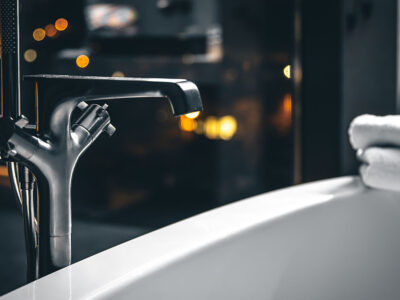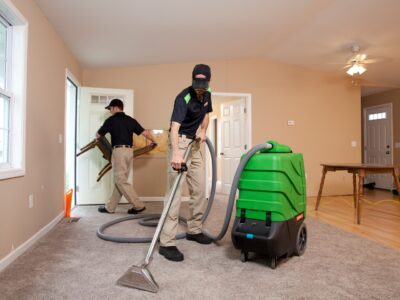
Recently, there has been an increasing popularity of touchless faucets in commercial and residential settings. It revolutionises the way individuals experience a luxurious touch when using a bathroom. Today, most people are highly concerned about the transmission of infectious diseases when utilising public restrooms. They want the assurance that they may utilise a public facility without fear of getting infected with an infectious disease.
A touchless faucet allows customers to wash their hands in public toilets without having to touch the faucet. As a result, customers may feel certain that they are using a restroom where disease transmission chances are limited.
Smart-sensor touchless faucets provide a compelling solution that increases the user experience while minimising health issues, from better cleanliness and convenience to water and energy conservation.
Let’s have a look at how touchless faucets work and the several advantages that they provide.
What is Touchless Technology?
Since touchless technology relies on sensors, it is also known as sensor technology. A sensor is a device that translates physical events into electrical signals. Touchless faucets are similar to standard faucets because you do not have to turn a handle to turn on the water manually. All touchless faucets use a motion sensor to determine when to activate the water supply stream and when to turn it off.
How Does it Work?
There are several sensors and types of sensors. However, its working may be broadly defined as follows:
- Sensors can identify the characteristic quantity of a given object and transform it into an easily interpretable signal. This signal can then be showcased on an instrument.
- A transmission diode consistently emits infrared light pulses, the intensity of which can be modified.
- When the user’s hands are positioned beneath the spout, the reflected light pulses are transformed into an electrical signal.
- This signal activates the valve, initiating the flow of water based on the electronic configuration.
- Once the hand exits the sensor’s range, the diode ceases to receive signals, causing the solenoid valve to close.
The Main Benefits of Touchless Faucets
Consider touchless faucets as a dependable plumbing solution for your company or home for the following reasons:
Water Saving
A major benefit of touchless faucets lies in their capacity to save water. This system eliminates the risk of inadvertently leaving the water running while engaging in activities such as handwashing or tooth brushing. The sensor takes charge by automatically shutting off the water if no activity is detected, leading to substantial water conservation. Unlike traditional faucets, where a few extra seconds of water may be used to manually turn off the faucet, a touchless faucet promotes water conservation by promptly closing the valve once the user has moved away from the sink.
Energy Saving
Sensor-operated faucets maintain a consistent water temperature, eliminating the need for additional energy consumption to adjust the water’s warmth. Due to this capability and ability to regulate water flow, touchless faucets generally exhibit higher energy efficiency than traditional, manually operated counterparts.
More Hygienic
Operating without any physical contact allows you to counter the mess and potential spread of germs entirely. A straightforward waving motion of the hand is all it takes to activate the faucet. This stands out as the primary advantage of touchless faucets compared to touch faucets, ensuring there is no risk of cross-contamination between users.
Simple to Use
The most attractive aspect of a touchless faucet lies in its simplicity of operation. Placing your hands in front of the sensor initiates the water flow—it’s as straightforward as that. Upon completing tasks like washing hands or rinsing a toothbrush, the water automatically turns off. Touch-free faucets are also user-friendly for both young children and seniors.
Touchless Faucets Are Safer
Caring for the well-being of family and guests is a fundamental aspect of homeownership. Hands-free sinks equipped with preset temperature settings eliminate the risk of accidents that may lead to burns. Despite the absence of visible handles commonly found in traditional sink faucets, you retain control over the temperature settings. Whether you share your living space with children and older adults or seek a safer approach to handwashing, opting for a touchless faucet is a wise decision.
Modern Design
While a few touchless faucets include a single lever handle for manual operation, the majority lack handles or knobs. This streamlined design imparts a modern and sleek appearance, making them well-suited for contemporary bathrooms and kitchens. The slender profile also tends to occupy less counter space at the sink and facilitates easier cleaning by providing a smoother surface to wipe down.
Is a Touchless Faucet Right for Your Bathroom?
While touchless faucets come with numerous advantages, they may not be the optimal choice for everyone. Before deciding to make the switch, consider the following factors:
- Touchless faucets typically come with a price tag about 30% higher than traditional models.
- Hands-free faucets consist of more mechanical components, which can result in higher repair costs.
- Sensor taps require regular cleaning, as the accumulation of debris can impact their responsiveness.
Final Note
While the upfront expenses for installing touchless faucets may be higher, you are bound to achieve long-term savings in both water usage and costs. Additionally, this initial investment brings forth other advantages, including enhanced safety features, improved sanitation, simplified maintenance, and increased convenience.
For adept DIY enthusiasts, independently undertaking a sink project might be tempting. However, it’s essential to note that hands-free faucets involve a distinct and more intricate installation process compared to traditional faucets. Moreover, local regulations might mandate the involvement of a licensed plumber. Hiring a professional is probably necessary to guarantee a correct and secure installation.












